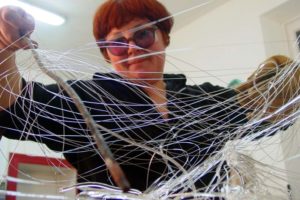Happy Birthday, Marc Chagall!
Marc Chagall, one of the great artists of our time, would have been 132 on July 7 this year. He was born in the Russian Empire and worked with paint and stained glass.
But he was a bit of a late bloomer in the stained glass medium -- he did not start working with stained glass until he was in his 70s!
 This blue window is in The Collegiate Church of St. Stephan in Mainz, Germany. Chagall completed it just before he died.
One of Chagall’s most beloved works is America Windows at the Art Institute in Chicago.
It is believed that Chagall put lots of emotion into his work.
There are many famous Chagall quotes, which I think explain a lot about him:
This blue window is in The Collegiate Church of St. Stephan in Mainz, Germany. Chagall completed it just before he died.
One of Chagall’s most beloved works is America Windows at the Art Institute in Chicago.
It is believed that Chagall put lots of emotion into his work.
There are many famous Chagall quotes, which I think explain a lot about him:

 This blue window is in The Collegiate Church of St. Stephan in Mainz, Germany. Chagall completed it just before he died.
This blue window is in The Collegiate Church of St. Stephan in Mainz, Germany. Chagall completed it just before he died.If I create from the heart, nearly everything works; if from the head, almost nothing.

Art seems to me to be, above all, a state of soul.
For me, a stained glass window is a transparent partition between my heart and the heart of the world.










































